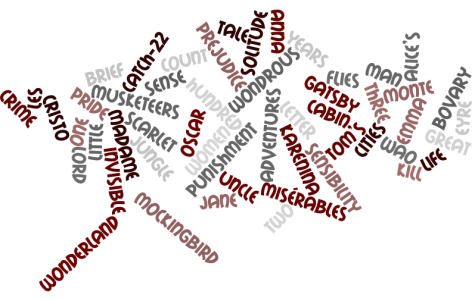Hey everyone! Your favorite, or maybe not favorite, wannabe writer is here to share some…well…writing! Experimental writing to be exact! I was inspired by a piece by Sherman Alexie and tired to imitate his genius. He is one of the funniest writers I know and he has an extremely interesting Native American perspective. I encourage all of you to read at least one of his pieces. Enjoy!
The Autobiography of Me, a Latino Woman
Early Saturday afternoon in a yellow house in Orlando.
A woman sits at the kitchen table and eats some soup from a can.
She can hear her mother complain on the phone.
“She doesn’t even cook for her husband!”
Her Abuelita’s voice is loud on the other end.
“I know! I tell her! I feel badly for Trever.”
This may be all you need to know about Latino Culture.
*
Thesis: Most people in Latin America either identify as Latino or Hispanic.
Thesis repeated:I would rather be called Latino than Hispanic because the label, “Hispanic,” was given to us in the United States as a way to group us all together. We are more diverse than one word can hold.
*
April 2014, Jacksonville, Grammie’s house. Trever’s cousins congratulate us on our engagement. His cousin Josh jokes about the cake toppers.
“You should have a Salsa dancer and a Cowboy. That would represent the different cultures perfectly!”
Everyone laughs. I hold back my frustration and laugh as well.
I’ve never been that good at dancing Salsa.
*
2006: I exit the lunch room with a group of middle school friends. The August warmth finds its way into every cool spot left on our bodies. The girls can feel sweat forming inside of their patted bras. The boys feel sweat trickle down their necks. The scent of Axe can no longer conceal their pungent smells. Rachel is talking about her experiences in Puerto Rico.
“School is way different over there.”
“I’m Puerto Rican too.”
“You can’t be Puerto Rican if you’re not born there,” she says.
Roderick agrees with her, “Yea! You’re white.”
I’m quiet for the rest of the day. A year earlier I was accused of acting too white when I was obviously Puerto Rican. I’m not sure what I am at this point.
*
2015: Yesterday my mom invited a couple over that are interested in our daycare. Mom tells them that we are Puerto Rican.
“So will you be speaking to our son in Spanish?”
My mom says no.
“Aw that’s too bad. We would love him to be bilingual.”
I wonder if they speak to him in Polish or Italian at home. Probably not.
*
I made the choice to marry a white, southern man. He made the choice to marry a Latino woman.
Our Hope: To create ethnically diverse babies that never have to worry about labels.
*
I want to be considered a Latino writer, but I’m not sure if I’m Latino enough nor do I read enough Latino literature. Do I need to eat a few more beans, sit under a few more Caribbean suns, and speak Spanish to be considered Puerto Rican?
This keeps me up at night.
*
2014: A month before my wedding. I’m talking to my fiancé in the car ride home.
“You know what Aunt Marlene told me today?”
“No, what?”
“She said it’s good that I’m not marrying a Mexican because they’re dirty people.”
“Wow, that’s terrible. I better not tell her about the Mexicans in my family.”
“Yea, you should probably hold back on that one. Marlene’s just an eccentric old lady. ”
We both laugh it off, but something inside me hurts. I don’t think my cousins are dirty people.
*
2004: Tuesday, the first week of school. My father is talking to me on our car ride to Deerwood Elementary.
“Remember, don’t paint everyone with the same brush. You are no better than anyone else and no one else is better than you.”
I wonder how many people painted my dad as a good for nothing “Hispanic.”
Here are some links to Sherman Alexie’s website and his memoir piece:
http://bibliosity.blogspot.com/2008/11/unauthorized-autobiography-of-me.html
http://fallsapart.com/

Recent Comments